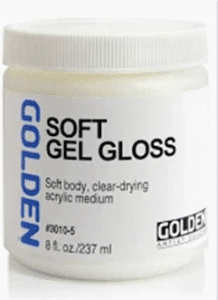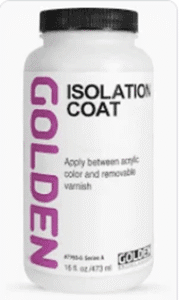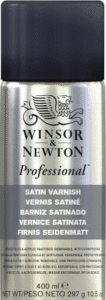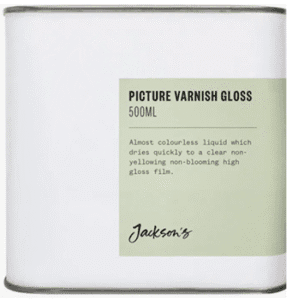Each of the painting types I have covered in the past few weeks need a different approach to finishing.
With acrylic paint you need to first wait until it is fully dry/cured and then you need to add an isolation coat. Depending on how thickly you have applied the paint, this could take at least a week. With acrylic paint you need to apply a couple of isolation coats before you varnish.
An isolation coat is a clear, permanent and, importantly, non-removable layer which separates your acrylic painting from the varnish. This isolation coat allows for the varnish to be removed and reapplied as and when this should be required.
 You can buy an isolation coat all pre-prepared for you made by Golden, but I have always used their soft gel gloss medium and thinned it down with two parts water to one of medium. Applying two or three thinner coats works best as you may miss an area on the first couple of passes, which will leave that part vulnerable if it needs to be cleaned.
You can buy an isolation coat all pre-prepared for you made by Golden, but I have always used their soft gel gloss medium and thinned it down with two parts water to one of medium. Applying two or three thinner coats works best as you may miss an area on the first couple of passes, which will leave that part vulnerable if it needs to be cleaned.
Golden also make all sorts of different varnishes but other manufacturers do, too. Once you have decided whether you want a gloss or matt finish, you can experiment with different products and different ways of applying the gloss. It can be applied with a brush, a roller or you could use spray varnish. You will need to find the method which suits your work best.
With oil paintings, no isolation coat is required. However, you do have to wait a lot longer for the paint to cure: six to 12 months, sometimes longer. Varnish for oil paintings is similar in finish to acrylic, so once again you need to choose matt or gloss and then you can decide whether to brush, roll or spray the finished artwork with the varnish of your choice.


With watercolour paintings you need do nothing once you have finished your painting other than frame it, preferably under glass, although many people use a type of Perspex these days.
Conservation, non-reflective, museum grade glass with UV protection is what you should be aiming for, particularly if you intend to sell your work. Yes, it is more expensive than the glass you will get from a standard picture framer, pick up in a department store or, as many people do, the local charity shop.
If you are prolific in your production of paintings, then shelling out for quality frames and glass can feel difficult. On the other hand, if you are producing work which people want to buy and you are making consistent sales, it is far better to be known for a high-quality finish than a shoddy one.
NB I do not get paid to endorse any people or brands mentioned in my blogs. If you enjoyed this post, please like, share and follow me. Sharing, liking and following raises the algorithms in my favour.
Thank you for your support.
